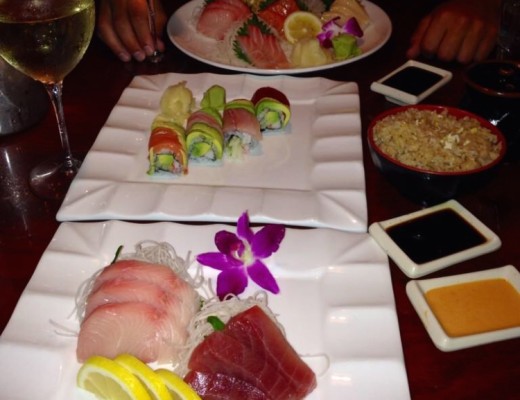1) Have water with your meal. A large soda (32 ounces) has about 400 calories that you can probably do without. Ask for water (sparkling, if it’s available, and you won’t miss the bubbles). At the very least, drink a diet soda to avoid the calories. If you have a sip between every bite, you’ll also slow down your eating time. Numerous studies have shown that eating slowly results in eating less which, when you’re eating at a fast food joint, is definitely a good thing. If you get coffee or tea use nonfat or low-fat milk instead of whole milk or cream.
2) Go for balance. Choose meals that contain a balance of lean proteins (like fish, chicken, or beans if you’re a vegetarian), fruits and vegetables (fries and potato chips don’t qualify as veggies!), and whole grains (like whole-wheat bread and brown rice). That’s why a turkey sandwich on whole wheat with lettuce and tomato is a better choice than a cheeseburger on a white bun.
3) Plan ahead. Before you go out to eat, think about where you will eat and what you will select. It will be much easier to make healthy choices if you have already decided what you will order.
4) Try not to arrive at the restaurant overly hungry. It’s harder to make healthy food choices when you get too hungry.
5) Think about your portions. Restaurants often serve portions that are enough to feed two or three people. To help you avoid overeating, if main portions at a restaurant are larger than you want, try one of these strategies to keep from overeating:
•Order an appetizer-sized portion or a side dish instead of an entrée.
•Share a main dish with a friend.
•When your food is delivered, set aside or pack half of it to go in a doggy bag immediately. Resign from the “clean your plate club” – when you’ve eaten enough, leave the rest.
6) Choose menu items that contain fruits, vegetables, and whole grains. Restaurant meals are often low in these food items (Mostly because they think people don’t want them…but we do! However I do think more restaurants are catching on to the health food trend, pwef!). So, by adding fruits and vegetables, you will have more of a balanced meal.
7) Ask for sauces and salad dressings on the side and use them sparingly. Ordering dressing and sauces on the side can make something as healthy as a salad unhealthy by covering it in dressing. When it is on the side you can regulate and easily understand how much you’re using. Don’t feel like you have to use the whole package. A small drizzle may be all you need.
8) Use salsa and mustard instead of mayonnaise or oil. And sauces that are high in sugars and/or fat. If you need a sauce for flavor, look for the one with the fewest calories. Mustard is good for sandwiches, Vinegar is good for fries, and lemon juice is good for salads. Ask for olive or canola oil instead of butter, margarine, or shortening when buttering your bread.
9) Order baked, broiled, or grilled (not fried). The best lean meats include turkey, chicken, seafood, or sirloin steak.
10) The sides are often the worst part of a meal. Most sides you get at a restaurant are fried or at least covered in some type of sauce or cheese. Choose them wisely by going with the simplest option. This is often a side salad or mixed vegetables. Use a small amount of sour cream instead of butter if you order a baked potato as well.
11) Choose fresh fruit instead of sugary, high-fat desserts and if you do indulge in the high-fat desserts don’t get your own, split with a friend, or two.
12) Ask for extra veggie toppings on your sandwich. Extra tomato, lettuce, and onion will add more vitamins, fiber, and flavor to the sandwich and will only add a few more calories. This can help turn a small burger or sandwich into something more substantial.



